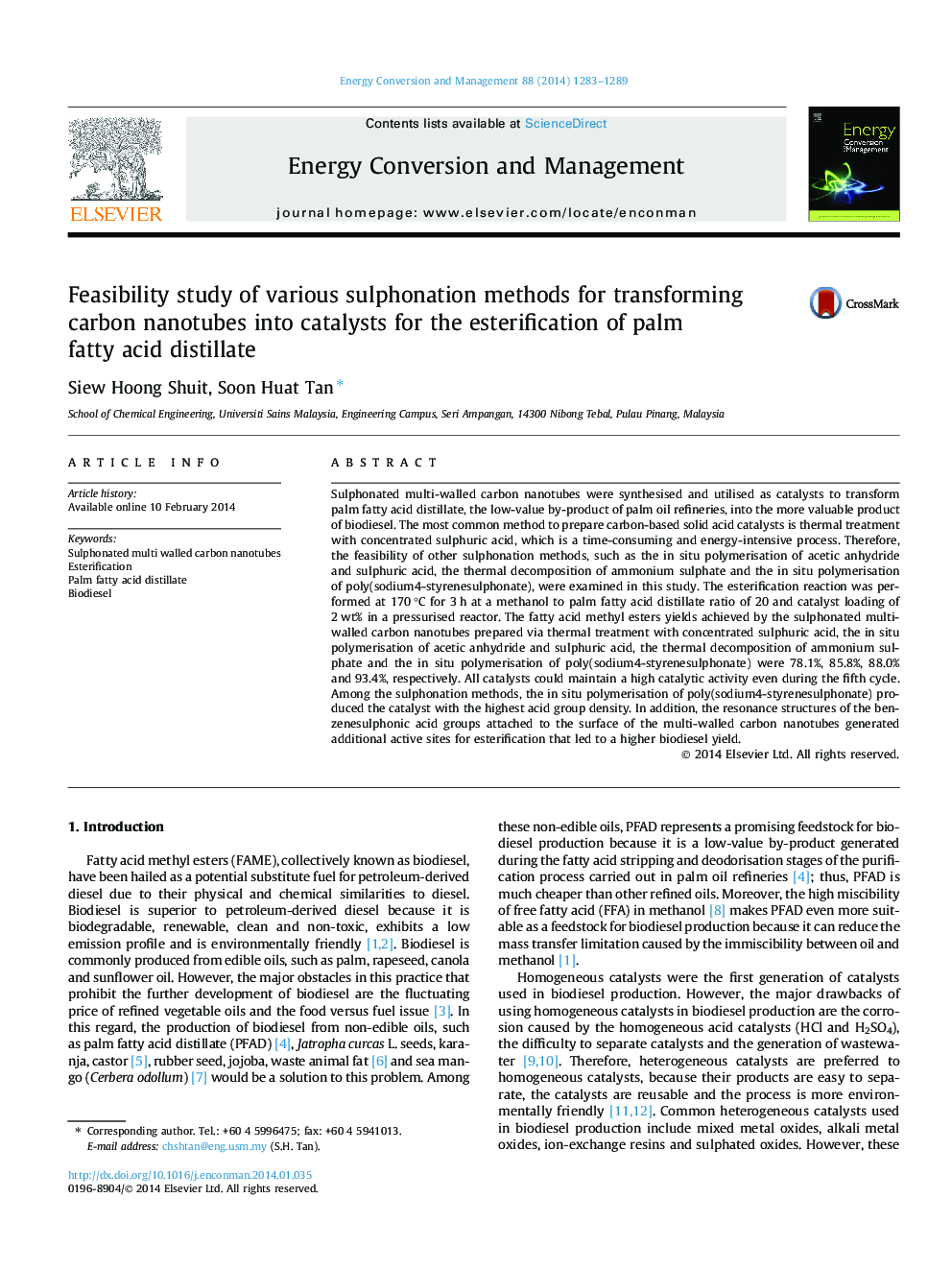| کد مقاله | کد نشریه | سال انتشار | مقاله انگلیسی | نسخه تمام متن |
|---|---|---|---|---|
| 765618 | 1462874 | 2014 | 7 صفحه PDF | دانلود رایگان |
• First report on the production of biodiesel from low-value industrial by-product using sulphonated MWCNTs as catalyst.
• Various sulphonation methods were used to transform MWCNTs into catalysts.
• SO3H were successfully grafted on the surface of MWCNTs, which resulted in a high biodiesel yield and reuse capacity.
• The maximum FAME yield by sulphonated MWCNTs was higher than for other popular solid acid catalysts.
Sulphonated multi-walled carbon nanotubes were synthesised and utilised as catalysts to transform palm fatty acid distillate, the low-value by-product of palm oil refineries, into the more valuable product of biodiesel. The most common method to prepare carbon-based solid acid catalysts is thermal treatment with concentrated sulphuric acid, which is a time-consuming and energy-intensive process. Therefore, the feasibility of other sulphonation methods, such as the in situ polymerisation of acetic anhydride and sulphuric acid, the thermal decomposition of ammonium sulphate and the in situ polymerisation of poly(sodium4-styrenesulphonate), were examined in this study. The esterification reaction was performed at 170 °C for 3 h at a methanol to palm fatty acid distillate ratio of 20 and catalyst loading of 2 wt% in a pressurised reactor. The fatty acid methyl esters yields achieved by the sulphonated multi-walled carbon nanotubes prepared via thermal treatment with concentrated sulphuric acid, the in situ polymerisation of acetic anhydride and sulphuric acid, the thermal decomposition of ammonium sulphate and the in situ polymerisation of poly(sodium4-styrenesulphonate) were 78.1%, 85.8%, 88.0% and 93.4%, respectively. All catalysts could maintain a high catalytic activity even during the fifth cycle. Among the sulphonation methods, the in situ polymerisation of poly(sodium4-styrenesulphonate) produced the catalyst with the highest acid group density. In addition, the resonance structures of the benzenesulphonic acid groups attached to the surface of the multi-walled carbon nanotubes generated additional active sites for esterification that led to a higher biodiesel yield.
Figure optionsDownload as PowerPoint slide
Journal: Energy Conversion and Management - Volume 88, December 2014, Pages 1283–1289
